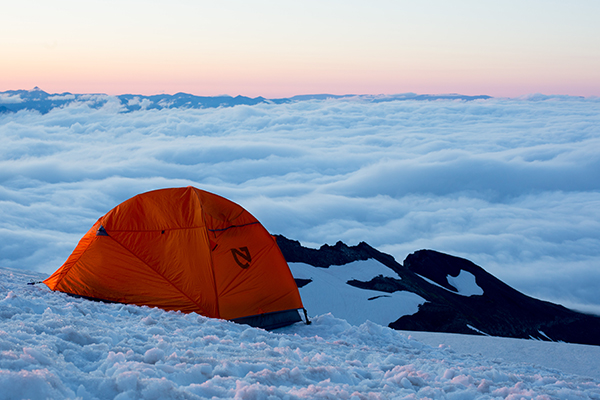
Skills to Thrive in the Cold
Camping in the winter requires a lot more skill and knowledge than in the warmer months. Everything is a little harder, colder, and demands more energy. There is an art to it and once you have the knowledge you can camp in any season and remain comfortable. We will learn how to select a campsite, create a tent platform, build wind walls, cook, melt drinking water, leave no trace, and stay warm and comfortable throughout the night. No experience is required.
CLIMB DETAILS
Length: 1 Night
Guide-to-Client Ratio: 1:4
Difficulty: Based on Experience: Ages 10+
When: December - April
Type: Course
Type: Experiential
PRICING
1 person: $550 per person
2 people: $450 per person
3 people: $350 per person
4 people: $300 per person
5+people: Call for rates
RENTAL GEAR
Most of the required equipment [listed below] is available for rent from our affiliate mtnGEAR. NEM climbers will receive an exclusive discount of 20% discount on all rental equipment and clothing.
Mandatory Items |
Guides Pick |
| [ ] Pack with Waist Strap: A 3000 cu. in. pack is the recommended size for one day climbs. Your pack MUST have a waist strap. A backpack will not suffice. | Camp M4 |
| [ ] Sleeping Bag: At least 0 degrees. We recommend a -20 degree bag. | |
| [ ] Foam Sleeping Pad | |
| [ ] Blow Up Sleeping Pad | |
| [ ] Warm Hat: Wool or synthetic. It should be warm and thin enough to fit underneath a climbing helmet. | Camp Race Hat |
| [ ] Balaclava/Neck Gaiter: Optional but recommended | Mountain Hardwear Powerstretch |
| [ ] Sun Glasses: A pair of dark-lensed sunglasses with side shields or full wrap-type sunglasses. | Julbo Dolgan | [ ] Insulated Parka: This item becomes of highest importance when we are faced with poor weather. This should be an expeditionary-type heavy parka that extends well below the waist and above the knees. Goose down is recommended versus synthetic fill. It does not have to be waterproof, but that is a nice feature. The parka is worn primarily at rest breaks on summit day and as an emergency garment if needed. When sizing a parka, allow for several layers to be worn underneath; buy it large. The parka must have an insulated hood. | Camp ED Protection Jacket |
| [ ] Mountaineering Boots: Insulated plastic boots are the preferred choice for ascents on Mt. Rainier. They provide the best insulation as well as a more rigid sole for kicking steps and holding crampons. Leather mountaineering boots that have completely rigid soles are also adequate, but they will need to be insulated and may still result in cold feet on summit day. Lightweight hiking boots without insulation are not acceptable as they don’t work well with crampons, or in very cold or wet weather. | Scarpa Inverno |
| [ ] Gaiters: A knee-length pair of gaiters, large enough to fit over your mountaineering boots. This will protect you from catching your crampons on loose clothing. | Outdoor Research Expedition Crocodiles |
| [ ] Heavyweight Socks: Either wool or synthetic. Some people find liner socks useful for reducing friction. | Smartwool Mountaineer |
| [ ] 2 Nalgene Water Bottles |
Book Online Now
Searching Availability...




 We are proud to work with the Department of Agriculture, the White Mountain National Forest and the Androscoggin Ranger District where we are authorized outfitter guides.
We are proud to work with the Department of Agriculture, the White Mountain National Forest and the Androscoggin Ranger District where we are authorized outfitter guides.
